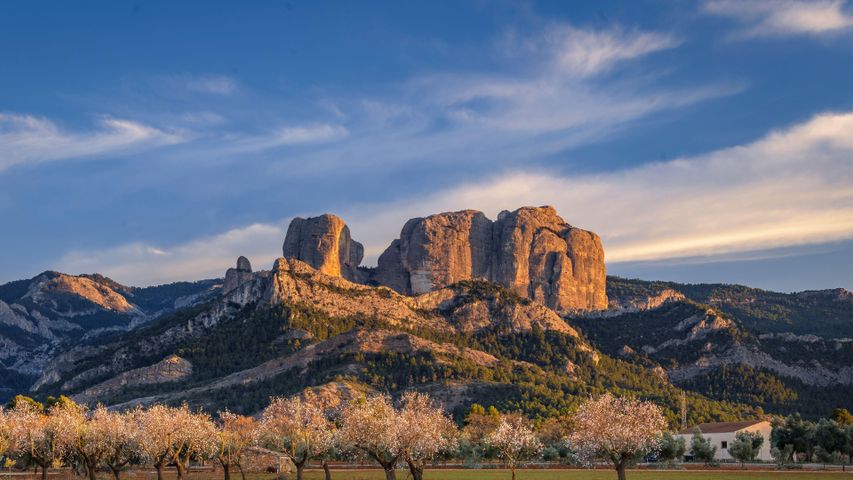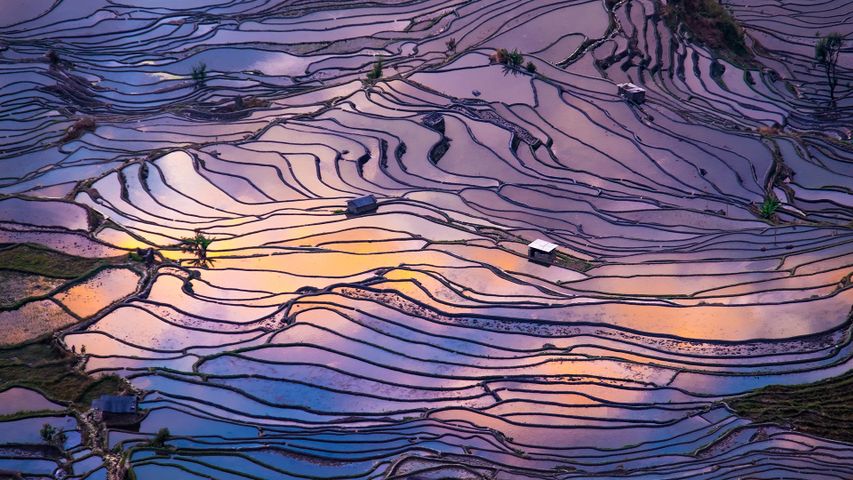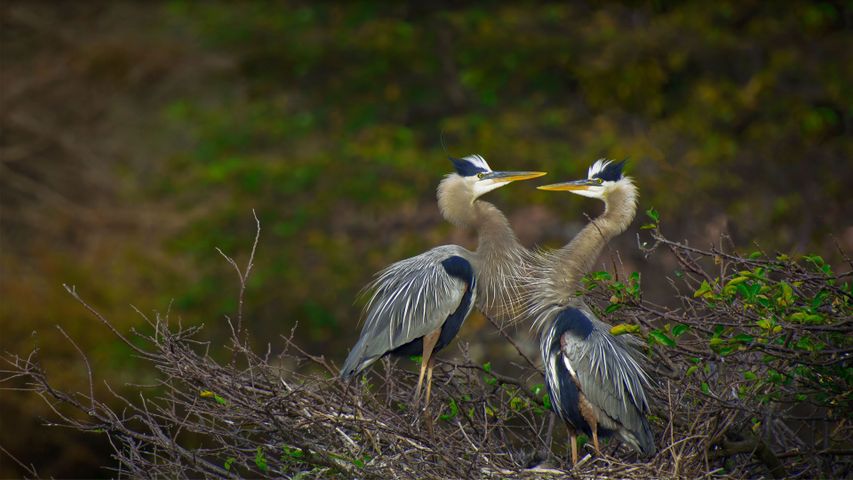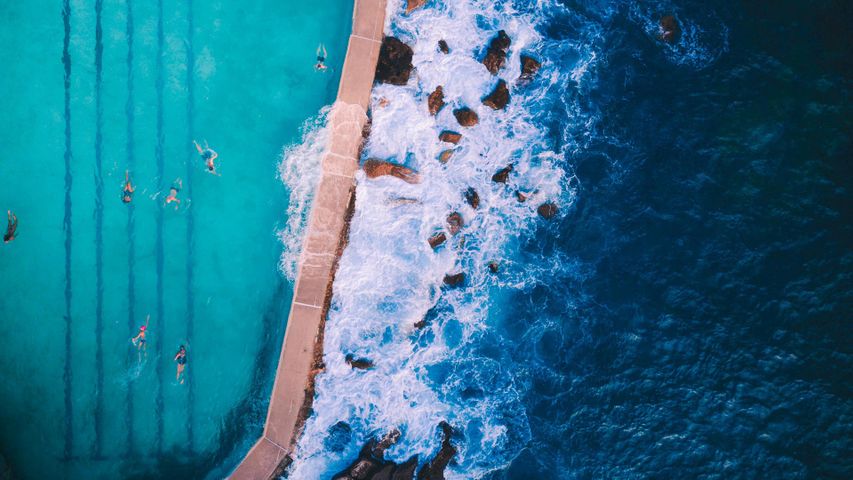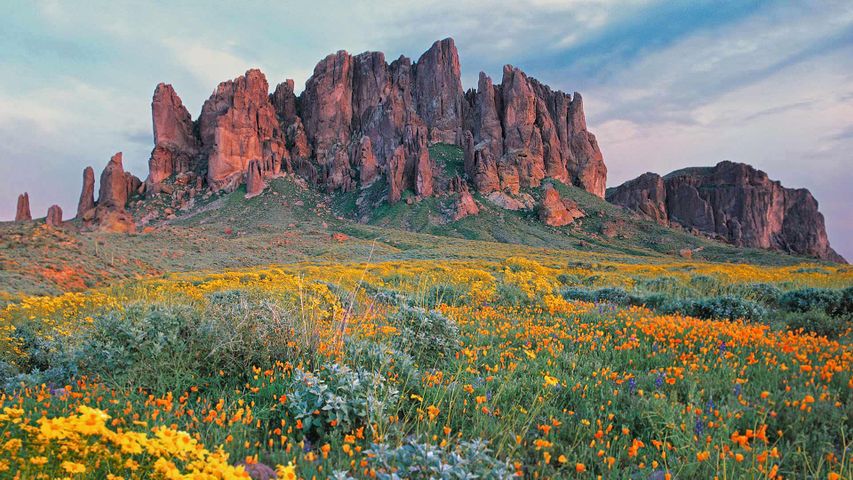Lake Tekapo with Aoraki/Mount Cook National Park in the background on New Zealand's South Island
© Sophie Dover/Getty Image
Blue Zealand. Lake Tekapo, New Zealand
Here on New Zealand's rugged South Island, the waters of Lake Tekapo display such striking electric-blue colors because of glacial silt flowing into the lake, carried by the braided Godley and Macauley Rivers, seen at the bottom of our image. These rivers are themselves fed by the melted waters of glaciers in the nearby Southern Alps. As these active glaciers slowly bulldoze the mountainsides, they pulverize rocks along valley floors and walls. All that grinding eventually produces a fine-grained powder of silt, sometimes called glacial flour. Meltwater picks up the silt, carrying it downstream and into lakes like Tekapo. The particles are so light and fine, they're slow to sink to the bottom, remaining suspended in the water column instead.
The name Tekapo is a misspelling of the Māori word Takapō, which means 'to leave in haste at night.' But if you are one of the region's many visitors, you may find the nighttime even more mesmerizing than the day. Lake Tekapo is a certified Dark Sky Reserve, one of the world's largest. With night skies almost completely free of light pollution, stargazing doesn't get much more vibrant, and tours cater to manuhiri (visitors) interested in astro-tourism. If that's not reason enough to stay the night, the area's abundant skiing and fishing opportunities might be. There's certainly no need to leave in a rush.
Related Images
Bing Today Images
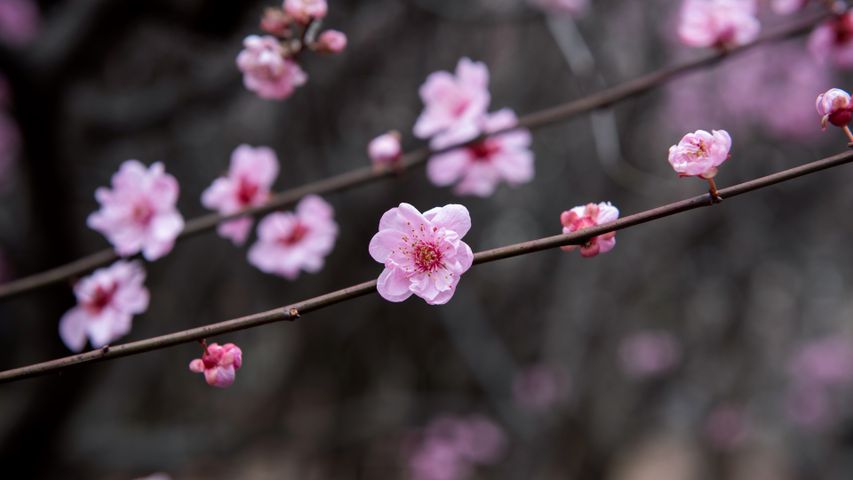
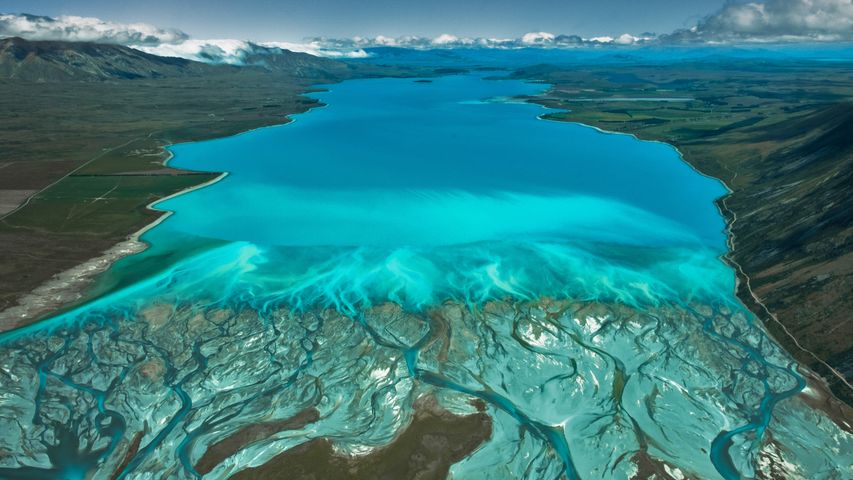
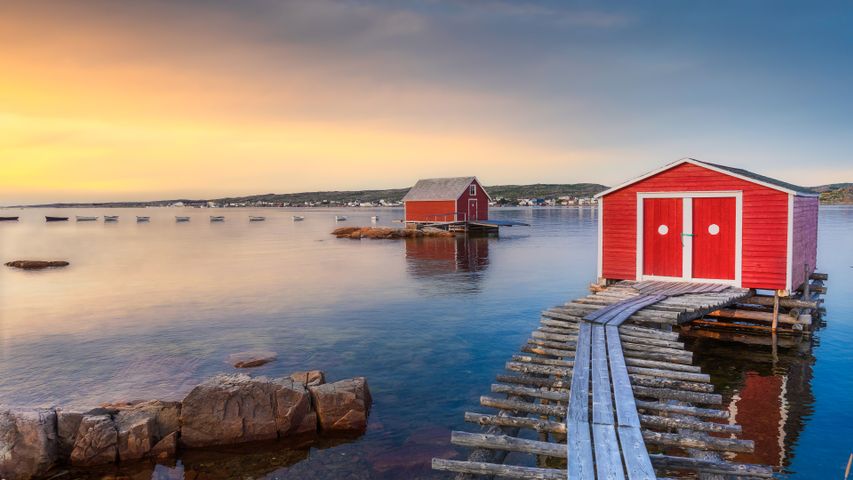 Fishing village of Tilting, Fogo Island, Newfoundland and Labrador, Canada
Fishing village of Tilting, Fogo Island, Newfoundland and Labrador, Canada
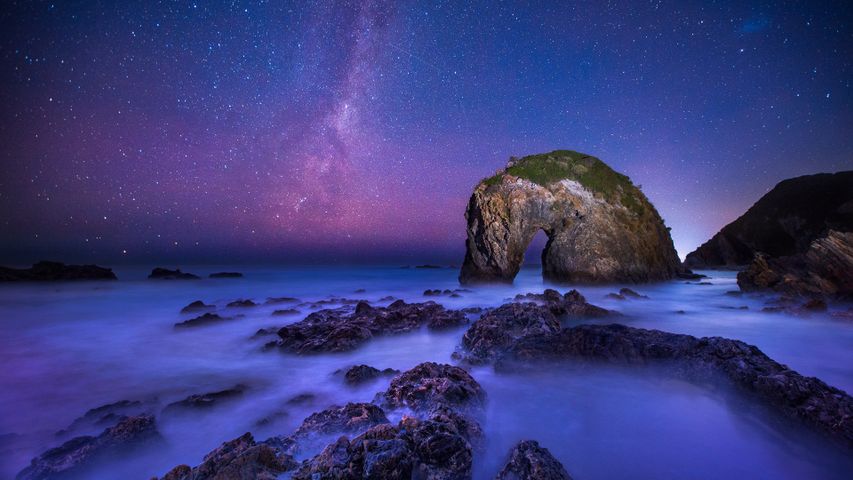 The Milky Way over Horse Head Rock, New South Wales, Australia
The Milky Way over Horse Head Rock, New South Wales, Australia
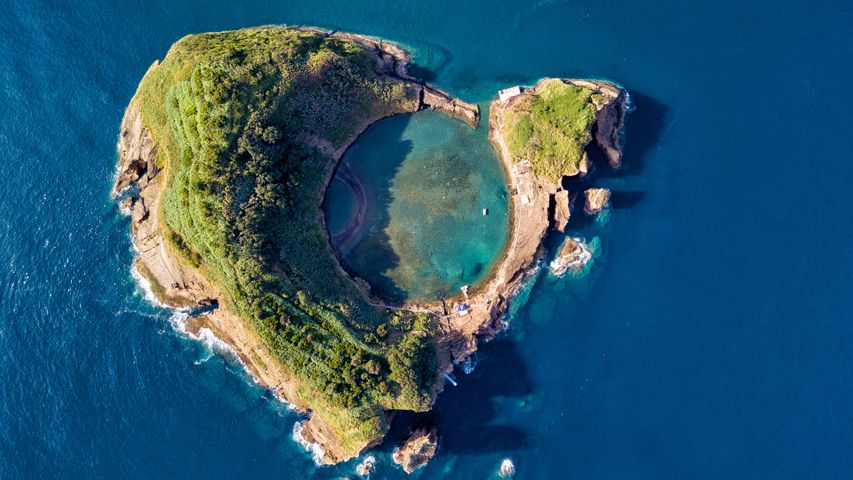 Vila Franca Islet, São Miguel Island, Azores, Portugal
Vila Franca Islet, São Miguel Island, Azores, Portugal
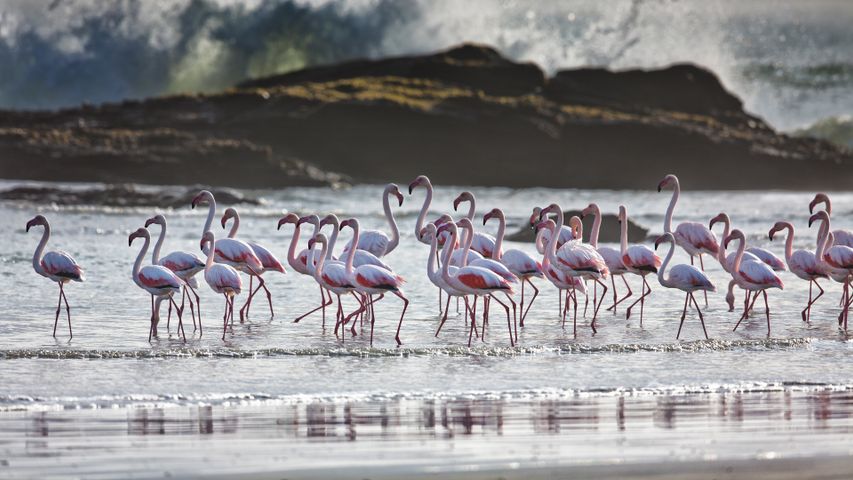 Greater flamingos, Lüderitz, Namibia
Greater flamingos, Lüderitz, Namibia
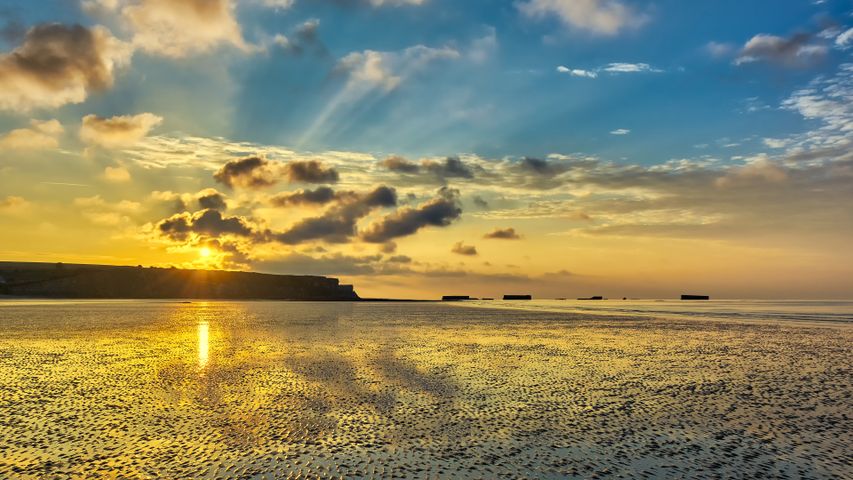 Arromanches-les-Bains in Normandy, France
Arromanches-les-Bains in Normandy, France
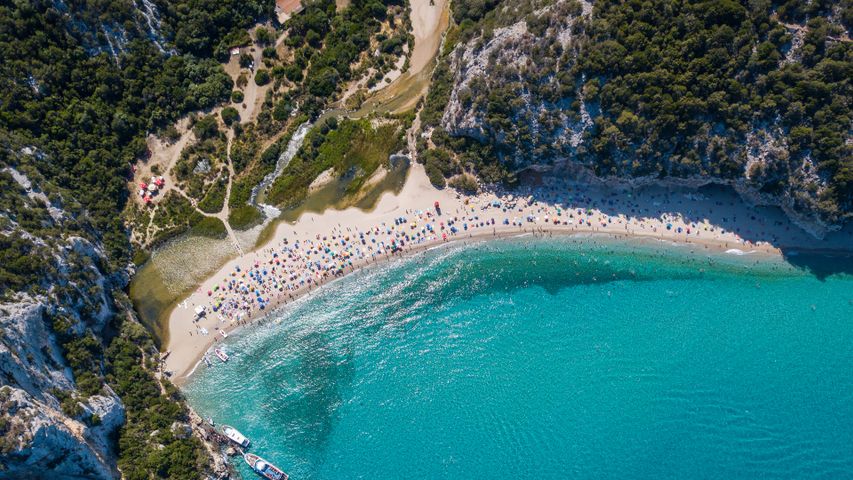 The beach at Cala Luna, Sardinia, Italy
The beach at Cala Luna, Sardinia, Italy
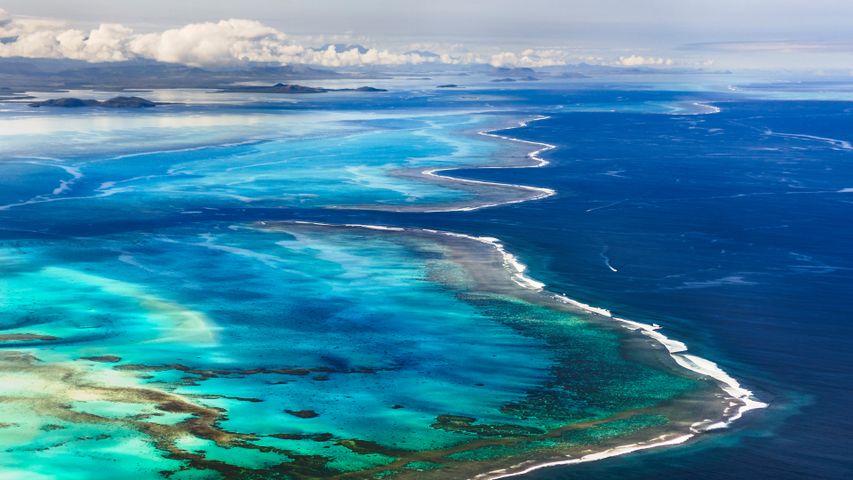 Barrier reef off the island of Grande Terre in the French overseas territory of New Caledonia
Barrier reef off the island of Grande Terre in the French overseas territory of New Caledonia
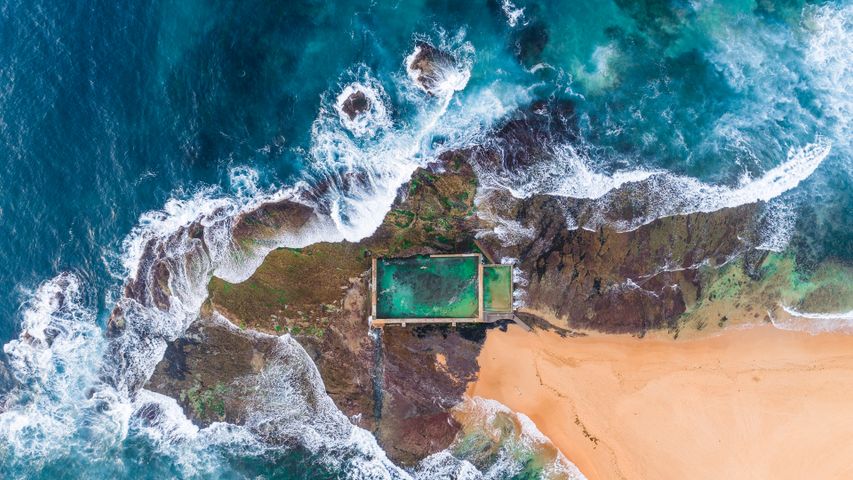 Mona Vale Rockpool, Sydney, Australia
Mona Vale Rockpool, Sydney, Australia
